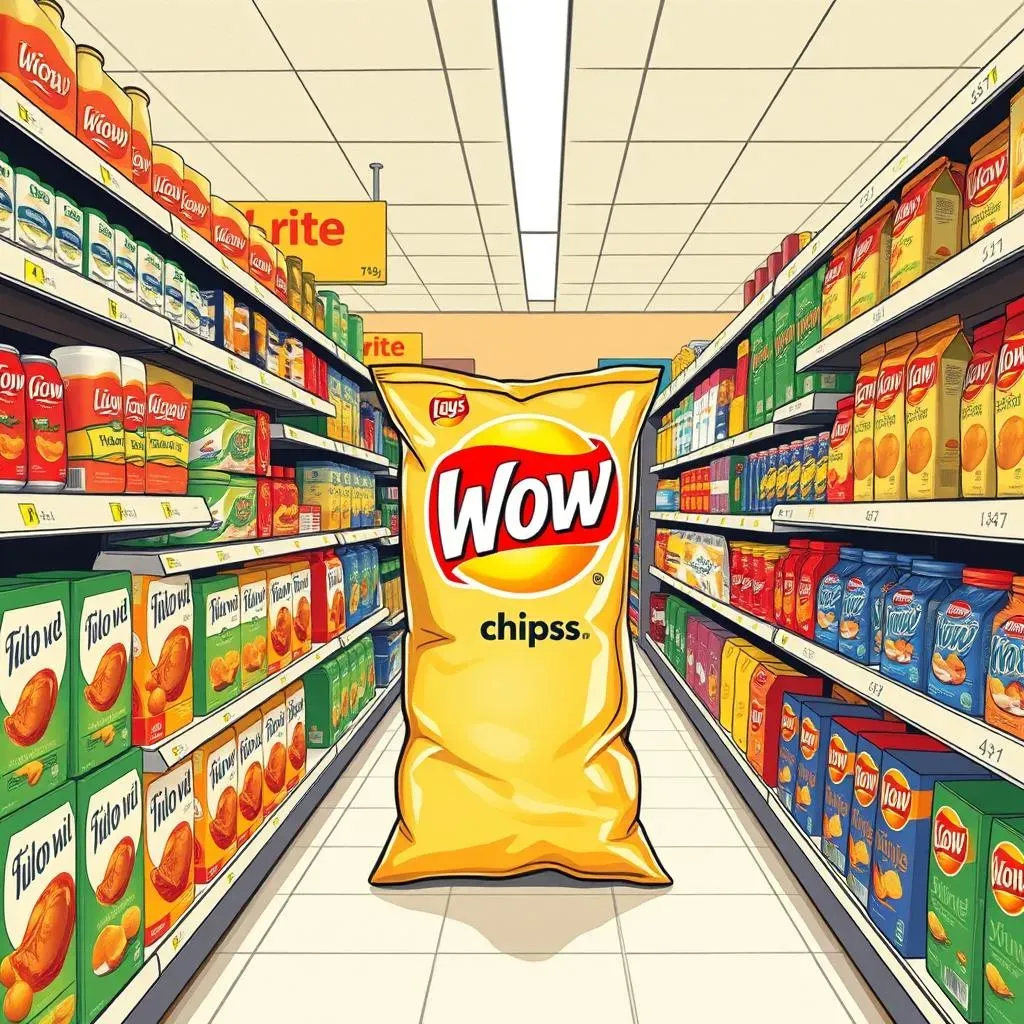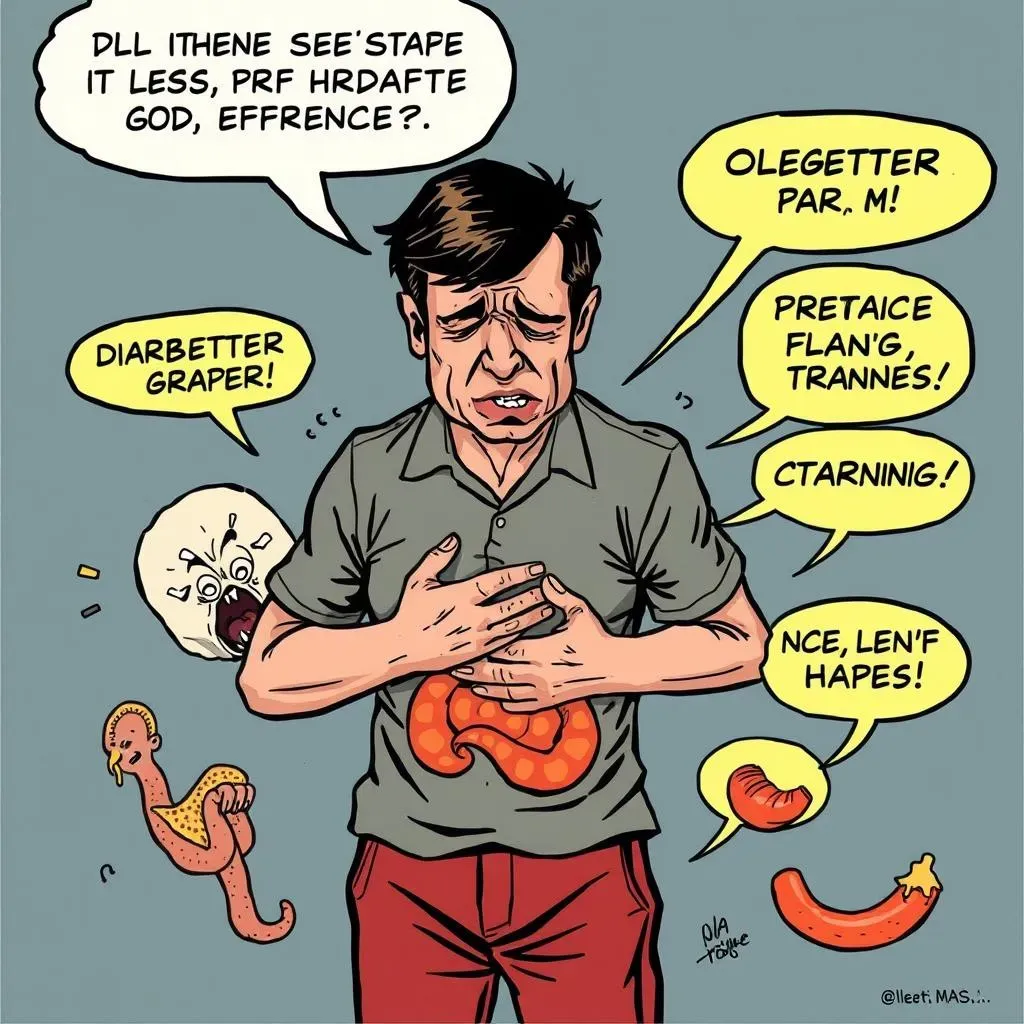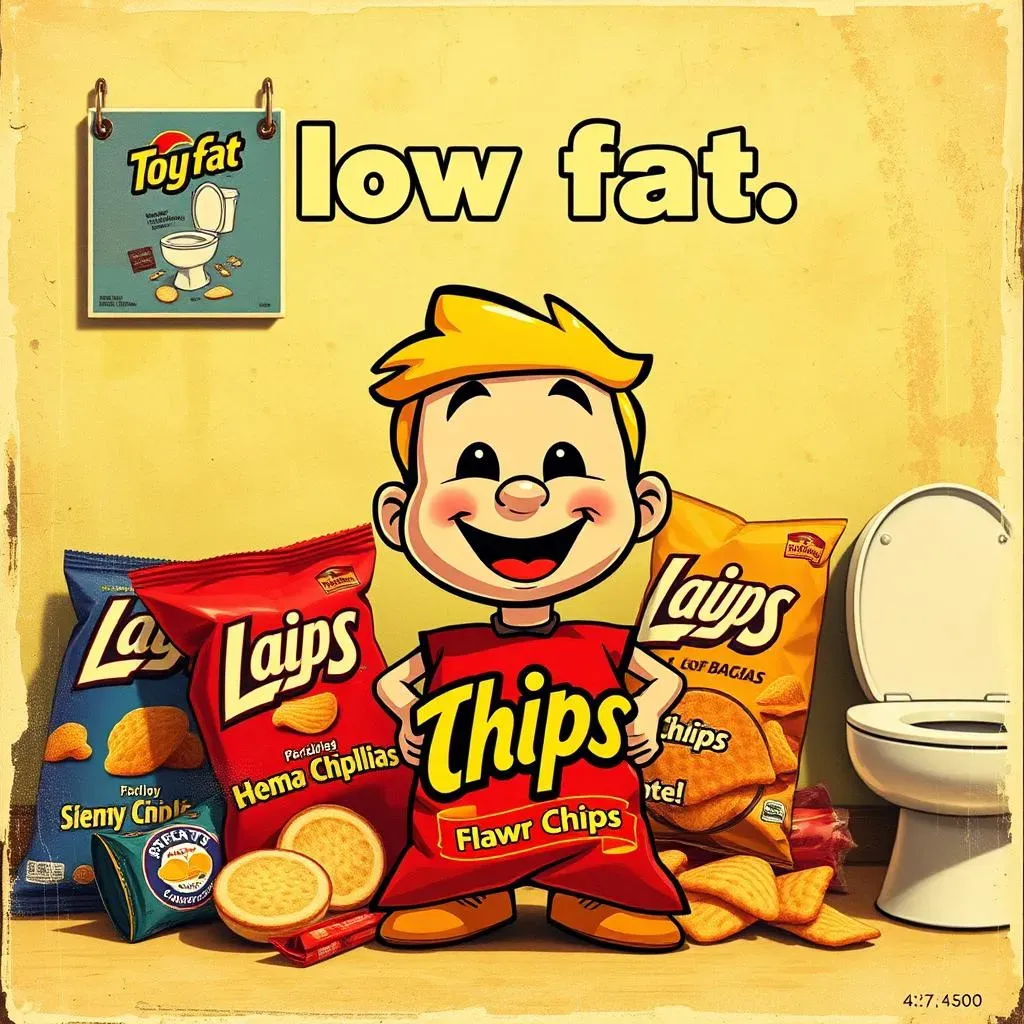Table of Contents
Remember the '90s? Low-fat everything was the craze, and chips were no exception. We all thought we'd cracked the code to guilt-free snacking. Then, *bam*, low fat chips diarrhea became a thing. It wasn't a pretty picture. This article isn't about shame; it's about understanding. We're going to take a trip back to the era of fat-free frenzy, uncover the science behind why some low-fat chips caused such digestive chaos, and learn why "low fat" doesn't automatically equal "healthy." We’ll explore how a seemingly harmless ingredient named Olestra turned snack time into a bathroom emergency, and what lessons we can learn from this tale of good intentions gone wrong. So, buckle up, it’s time to understand the low-fat chip saga and its, ahem, explosive consequences. Prepare yourself to learn why those chips were a bit of a gamble and what to look for instead.
The Rise and Fall of FatFree Chips

The Rise and Fall of FatFree Chips
The Promise of Guilt-Free Snacking
Picture this: the late 1990s. Low-fat was the golden rule. Every aisle in the grocery store was packed with "lite" versions of our favorite treats. Then came the fat-free chips. It was like a dream come true for snack lovers. We could eat a whole bag without the guilt, or so we thought. Companies like Frito-Lay jumped on this bandwagon, introducing Lay's Wow chips, among others. They promised the same satisfying crunch and taste, but without the fat. It seemed like science had finally given us permission to indulge without consequence. The initial hype was massive; people were buying these chips in droves.
It was a time of great hope, fueled by the idea that we could outsmart our bodies. The marketing was brilliant, playing on our collective desire for healthier options. These chips were not just a snack; they were a symbol of a new era of guilt-free eating. It was almost too good to be true, and you know what they say about things that seem too good to be true? Well, it usually is. The boom was definitely on, but it wouldn't last.
The Cracks Begin to Show
The early enthusiasm started to wane as people began experiencing some...unpleasant side effects. It turns out, these chips weren't quite the miracle food we'd hoped for. The secret ingredient, Olestra, was the culprit. Olestra is a fat substitute that our bodies can't digest. It passes right through, and it takes some things with it. Think of it like a greased slide for your digestive system. This led to, shall we say, "digestive distress" for many consumers. People started reporting abdominal cramping, diarrhea, and other less-than-desirable bathroom situations.
Sales, which had started so strong, began to plummet. It turns out, people value their digestive comfort more than a few fat-free chips. The warnings on the packaging, which were initially overlooked, became a stark reminder of the potential downsides. The dream of guilt-free snacking turned into a nightmare for some, and the public's perception of these chips shifted dramatically. The rise was fast, but the fall was even faster, and the fat-free chip craze was about to learn a harsh lesson.
Chip Type | Key Feature | Initial Reaction | Eventual Outcome |
|---|---|---|---|
Lay's Wow Chips | Fat-free with Olestra | Massive popularity | Sales plummeted due to side effects |
Pringles Fat-Free | Fat-free with Olestra | Initial interest | Public complaints and sales decline |
Other Fat-Free Brands | Similar fat substitute | Attempted to replicate success | Faced similar consumer backlash |
Olestra: The Culprit Behind the Digestive Drama

Olestra: The Culprit Behind the Digestive Drama
The Science of Olestra
Okay, so let’s talk about Olestra, the real villain in our low-fat chip saga. It’s this lab-created fat substitute that's too big for our bodies to digest. Imagine trying to swallow a beach ball; your body's like, “Nope, not happening!” Olestra is like that beach ball. It has the same taste and feel as regular fat, but our digestive system can't break it down. Instead, it just slides through, taking some vitamins and nutrients along for the ride. This is why those chips were zero fat and zero calories – your body just didn't absorb any of it. Sounds great, right? Wrong.
Because Olestra isn't absorbed, it ends up in the large intestine, where it can cause a whole host of problems. It can interfere with the absorption of fat-soluble vitamins, like A, D, E, and K. This isn't just a minor inconvenience; these vitamins are essential for things like healthy vision, strong bones, and proper blood clotting. Plus, all that undigested fat in your gut can cause some serious discomfort. It's like having an oil slick in your intestines.
The Not-So-Fun Side Effects
So, what happens when you have a bunch of undigested fat chilling in your gut? Well, it can lead to some pretty unpleasant experiences. Many people reported abdominal cramping, bloating, and yes, you guessed it, diarrhea. And not just any diarrhea – we're talking about the kind that makes you question all your life choices. Some folks even experienced something politely referred to as "anal leakage," which is basically what happens when your body is trying to get rid of all that extra fat as quickly as possible. It's definitely not a topic for polite dinner conversation, but it's important to understand the realities of what Olestra did to some people.
The symptoms varied from person to person, but the common theme was digestive distress. It wasn't just a little tummy ache; it was a full-blown gastrointestinal rebellion. People who ate these chips quickly learned that the promise of "guilt-free" snacking came with a hefty price. The warnings on the packaging became a source of dark humor, as people realized they were basically playing Russian roulette with their digestive systems. The whole thing was a bit of a mess, to be honest.
Side Effect | Description | Why it Happens |
|---|---|---|
Abdominal Cramping | Painful spasms in the stomach area | Undigested fat irritates the intestines |
Diarrhea | Loose, frequent bowel movements | Olestra pulls water into the intestines |
Anal Leakage | Involuntary release of oily stool | Excess fat and oil are expelled from the body |
Vitamin Deficiencies | Lack of fat-soluble vitamins | Olestra interferes with absorption |
The Aftermath and Lessons Learned
The Olestra saga wasn't just a personal disaster for those experiencing the side effects; it was a public relations nightmare for the companies that made these chips. The backlash was swift and severe. Lawsuits were filed, and the once-popular chips became synonymous with digestive problems. It’s a classic case of a product being hyped as revolutionary, only to crash and burn when the reality didn't match the promises. The whole thing served as a cautionary tale about the dangers of blindly trusting marketing claims and the importance of understanding the science behind what we're putting in our bodies.
Ultimately, the Olestra experiment showed us that sometimes, trying to outsmart nature doesn't work out so well. It also highlighted the fact that "low-fat" or "fat-free" doesn't always mean "healthy." There's more to nutrition than just cutting out fat. It’s about balance, moderation, and understanding how our bodies actually work. The low-fat chip craze taught us some hard lessons, and hopefully, we learned from them.
Why Low Fat Doesn't Always Mean Healthy

Why Low Fat Doesn't Always Mean Healthy
The Misleading "Low Fat" Label
Okay, let's be real: the "low fat" label can be pretty sneaky. It often makes us think we're making a healthier choice, right? But here's the thing: when food companies remove fat, they usually replace it with something else to make the food palatable. And that "something else" isn't always great for us. Think about it – if you take the fat out of a cookie, it's going to taste like cardboard. So they add sugar, salt, and other additives to make it taste good again. The result? A product that might be low in fat, but is often high in calories and other unhealthy ingredients. It’s like a magician’s trick, they remove one thing and add another, and we are none the wiser. The focus on "low fat" has often distracted us from the real issue: the overall nutritional value of what we're eating.
The low-fat craze created a whole industry of processed foods that were marketed as healthy alternatives, but were often anything but. We were so focused on avoiding fat that we completely missed the boat on other important things like whole grains, fiber, and natural ingredients. The truth is, our bodies need fat. It's essential for absorbing vitamins, producing hormones, and keeping our brains functioning properly. The problem isn't fat itself; it's the kind of fat we're eating and the amount. So, next time you see "low fat" on a label, take a closer look at the ingredient list. It's time to look past the hype and focus on what’s really in our food.
"Healthy" Label | Common Reality | Why It's Misleading |
|---|---|---|
Low Fat | High in sugar and additives | Replaces fat with unhealthy alternatives |
Fat-Free | Often processed and lacking nutrients | Removes essential fats and vitamins |
Lite | May still be high in calories | Can create a false sense of healthiness |
The Importance of Good Fats
Not all fats are created equal, you know? There's a big difference between the fats in a greasy burger and the fats in an avocado. Good fats, like monounsaturated and polyunsaturated fats, are actually really important for our health. They help keep our hearts healthy, our brains sharp, and our bodies functioning smoothly. Think of them as the good guys in the fat world. They're found in foods like avocados, nuts, seeds, and olive oil. These fats don't cause the same digestive issues as the fake fats like Olestra, and they don't come with the baggage of added sugars and processed ingredients. It’s all about choosing the right kinds of fats to support your overall health.
So, instead of focusing on avoiding all fat, we should be focusing on choosing the right ones. It’s time to ditch the idea that fat is the enemy and embrace a more balanced approach to nutrition. We should be aiming for whole, unprocessed foods that provide us with the essential nutrients we need, including those good fats. It's not about cutting out entire food groups; it's about making smart choices that nourish our bodies from the inside out. Think of your diet as a garden – you need to plant a variety of seeds to grow a healthy, thriving ecosystem. The same goes for your body. A balanced diet with good fats is key for long term health.
